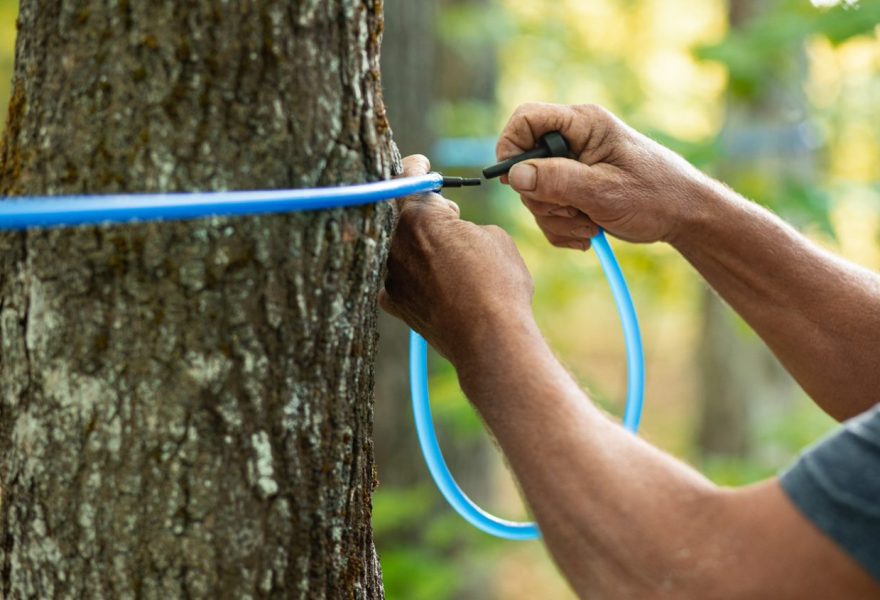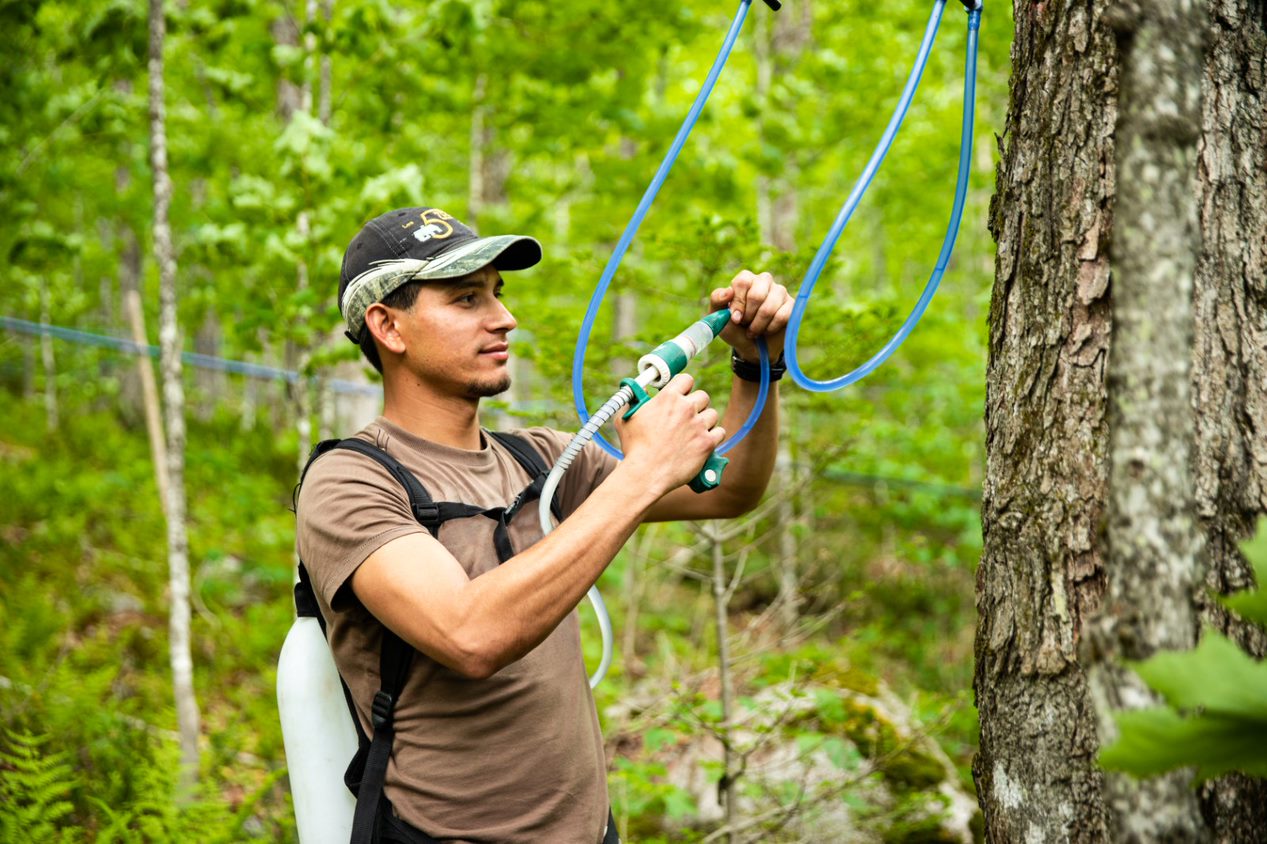Climate change and maple syrup: how is the industry adapting?

For centuries, maple trees have been tapped for their deliciously sweet sap. The history of maple syrup starts with the indigenous peoples of North America, and today maple syrup is enjoyed all around the world.
In recent years, however, concerns have been raised about the impact of climate change on maple syrup production. Rising temperatures are threatening to reduce maple sap yields, and some regions in the southern belt of the sugar maple’s natural habitat are already starting to see a decline.
However, new technologies and tree tapping methods are helping maple syrup farmers adapt to climate change, and there’s a growing sense of optimism within the industry that the demand for maple syrup can be met for generations to come.
How is climate change affecting maple syrup production?
Maple syrup is made by boiling the sap of maple trees. Maple sap can only be harvested under a specific set of conditions, and any deviation from those conditions can have a significant impact on production.
As the climate changes, the weather patterns that maple trees rely on are becoming less predictable. This is causing a number of problems for maple syrup producers, including shorter tapping seasons and lower yields.
Shift in seasons
Warmer temperatures are disrupting the freeze-thaw cycles that take place in spring and cause maple sap to flow out to the branches of the tree. The sugaring season in Quebec typically lasts around 4 to 6 weeks from mid-March to the end of April.
In some regions, these seasons which have generally remained the same for decades are now starting earlier. What’s more, the sugaring season is also finishing sooner, giving farmers less time to collect maple sap and ultimately leading to lower yields.
One study found that, by 2100, the sugaring season may begin one month earlier than it did between 1950 and 2017. Another study found that warmer temperatures reduce the sugar content of maple sap, meaning it takes more to produce pure maple syrup.
Maple syrup is classified into four grades, with each having a distinct colour and flavour. The different maple syrup grades are harvested at different points of the sugaring season, so as the climate changes, the yields of each grade may also become more unpredictable.
Extreme weather events
Another consequence of climate change is an increase in severe weather events that impact the health of maple trees. These include storms, floods, droughts, acid rain, invasive species and soil degradation.
Wind and ice storms have been known to uproot maple trees, while droughts can kill seedlings and stunt root growth. Reduced snow cover, which provides water and insulates roots against the cold, leaves roots exposed and more likely to freeze.
A growing number of invasive species are also migrating north into maple syrup-producing regions as a direct result of climate change. From moths and worms to beetles and caterpillars, these pests are posing problems for maple syrup farmers by damaging the trees upon which they depend.

How are maple syrup farmers adapting to climate change?
Many maple syrup producers are taking action against climate change by adopting new technologies, which are helping to offset any losses from extreme weather events and shorter tapping seasons.
Small and large farmers alike are now seeing the benefits of vacuum pumps. These pumps work by lowering the pressure inside the maple tree, thereby speeding up the flow of the sap so that more of it can be collected.
When it comes to actually making maple syrup, reverse osmosis units can vastly improve efficiency. Not only do these units accelerate the removal of water from the maple sap, but they also reduce the amount of wood used as fuel when boiling the sap.
While the sugar maple tree is best for producing maple syrup, other species of maple tree can also be used for this purpose. One possible currently being explored is to tap a wider range of maple trees, including the black maple and red maple.
It’s also good to know that most maple syrup farmers in Quebec have additional supplies saved from previous seasons, so in the event of a particularly poor harvest, there’ll still be plenty of maple syrup for the world to enjoy!
Future-proofing the maple syrup industry
The disruption of the sugaring season underlines the urgency of the climate crisis, and while steps are currently being taken within the industry to adapt, wholesale change is needed at a global scale to turn the tide.
Maple forests themselves play an important role in curbing climate change by capturing carbon and removing it from the atmosphere. By protecting natural carbon sinks like these and investing in renewable energy, the future of the maple syrup industry – and the world – can be secured.
Want to learn more about maple syrup and discover how you can use the sweetener in your cooking and baking? Make sure to check out recipes with maple syrup.
A natural source of energy
Maple syrup is a natural source of energy. Check out our recipes for food and drinks before, during, and after exercise.
)